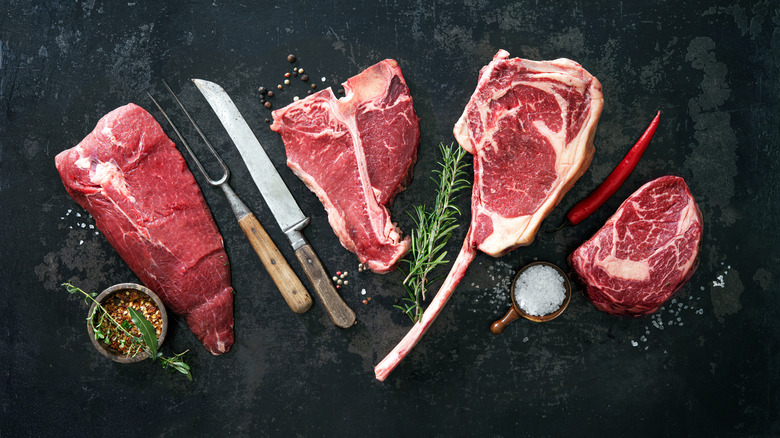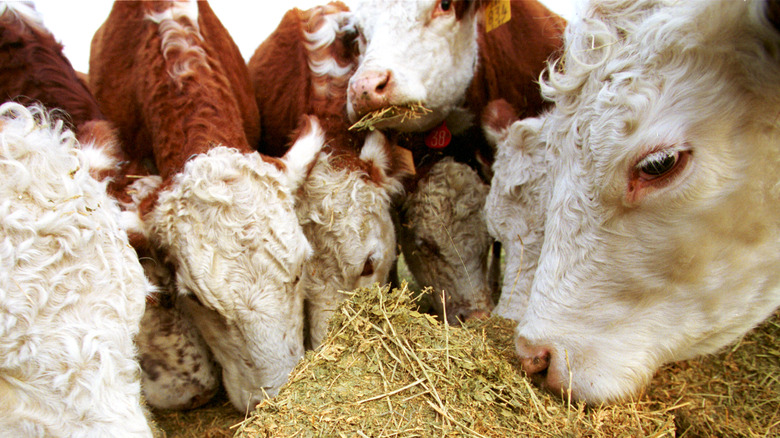Which US State Produces The Most Beef?
As the world's largest producer of beef, it's no surprise dishes centered around the protein are ingrained into American culinary culture. From steaks, burgers, and meatloaf, food made from beef are consumed frequently. In fact, there's production in every state to meet demand, via World Population Review. The USDA calls cattle production the most significant agricultural commodity, comprising 17% of the $391 billion cash receipts. Clearly, beef are a big business in the U.S., but surprisingly, the cattle population peaked in the 1970s and has dropped by 25%, mostly due to improved optimization, reports the The New York Times.
Beyond economics, cattle are emblems of the Western United States through symbols of cowboys, pioneers, and new frontiers. Throughout the 1880s, millions of cattle migrated through huge swaths of open land starting in North Texas and throughout the rest of the Great Plains. Fueled by foreign investment, the American government banned fences and handed out cattle contracts, per Britannica. While a ferocious winter wiped out the open range in 1887, the state where American cattle origins took hold still leads production.
Texas produces the most beef in the U.S.
With over 12.5 million cattle, Texas leads beef production in the U.S.; almost doubling the quantity of Nebraska, the second largest producer, reports Beef2Live. Per the state motto, "Everything is bigger in Texas," this includes the facilities of cattle production, with individual feedlots housing some 26,000 cows, via The Guardian. According to the Progressive Farmer, most Texan cattle production is centered in the panhandle, underpinned by 88% of the state's feedlots and the epicenter of the meatpacking industry.
Expectedly, such production doesn't come without consequence. In 2020, Texas Observer chronicled the state government's negligence toward health risks of feedlot production. Fecal dust clouds filled with dangerous ammonium coat cattle towns nearly daily, causing adverse health effects like asthma and irregular heartbeats. A 2006 study in North Carolina found that the dangers of compact animal feeding spread into schools and caused childhood asthma symptoms via the National Library of Medicine. So while switching to plant alternatives is one surefire way of battling pollution, there's also environmental hope in open-grazing and smaller-scale production.

